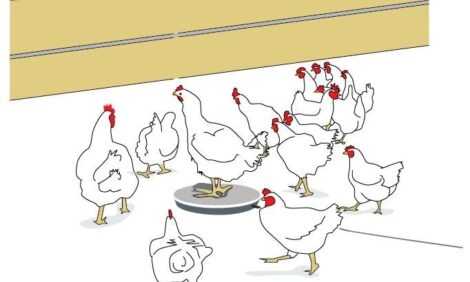



Optimal Specimen Collection and Transport Methods for the Detection of Avian Influenza Virus and Newcastle Disease Virus
Flocked and foam swabs were better than non-flocked swabs, transporting swabs wet was better for virus recovery and detection than transporting them dry and the results depended on the transport medium, researchers in the US report.Active and passive surveillance for avian influenza virus (AIV) and Newcastle disease virus (NDV) is widespread in commercial poultry worldwide, therefore optimisation of sample collection and transport would be valuable to achieve the best sensitivity and specificity possible, and to develop the most accurate and efficient testing programmes.
Erica Spackman from the Southeast Poultry Research Laboratory, USDA, Agricultural Research Service and co-authors there and at National Veterinary Services Laboratories, USDA-APHIS and the University of Delaware report their work in this area in BMC Veterinary Research.
They selected a H7N2 low pathogenicity (LP) AIV strain and used it as an indicator virus because it is present in lower concentrations in swabbings and thus requires greater sensitivity for detection compared to highly pathogenic (HP) AIV. For similar reasons, a mesogenic strain of NDV was selected.
Using oro-pharyngeal and cloacal swabs collected from chickens experimentally exposed to the viruses, the researchers evaluated the effects of numerous aspects of sample collection and transport:
- swab construction material (flocked nylon, non-flocked Dacron, or urethane foam)
- transport media (brain heart infusion broth, BHI, or phosphate buffered saline, PBS)
- media volume (2ml or 3.5ml)
- transporting the swab wet in the vial or removing the swab prior to transport, or transporting the swab dry with no media, and
- single swabs versus pooling five or 11 swabs per vial.
Using real-time RT-PCR (rRT-PCR), virus isolation (VI) and commercial antigen detection immunoassays for AIV, they observed statistically significant differences and consistent trends with some elements of sample collection and transport; media, dry transport and swab construction.
Conversely, the number of swabs pooled (one, five or 11) and whether the swab was removed prior to transport did not impact virus detection.
Similarly, with NDV, detection by both VI and rRT-PCR was not affected by the numbers of swabs collected in a single vial (one, five or 11).
Spackman and co-authors concluded that flocked and foam swabs were superior to non-flocked swabs, BHI media was better than PBS and transporting swabs wet was better for virus recovery and detection than transporting them dry. They found no observable difference in detection whether the swab was removed prior to transport or left in the vial. Also, with both AIV and NDV, there was no observed difference in virus detection between pools of one, five or 11 swabs.
Reference
Spackman E., J.C. Pedersen, E.T. McKinley and J. Gelb. 2013. Optimal specimen collection and transport methods for the detection of avian influenza virus and Newcastle disease virus. BMC Veterinary Research 2013, 9:35 doi:10.1186/1746-6148-9-35
Further ReadingYou can view the full report by clicking here.Find out more information on the diseases mentioned in this article by clicking here. |
March 2013











